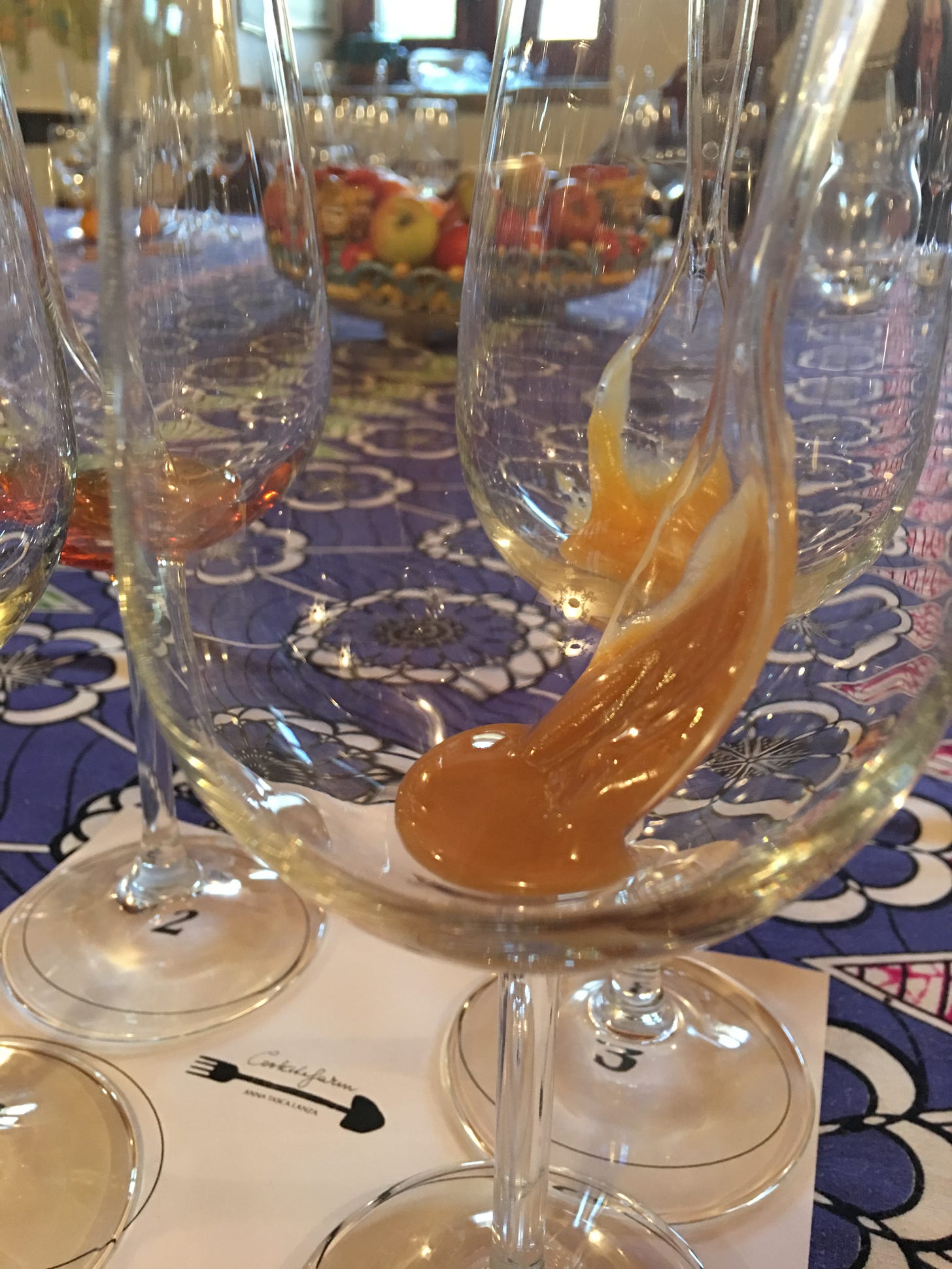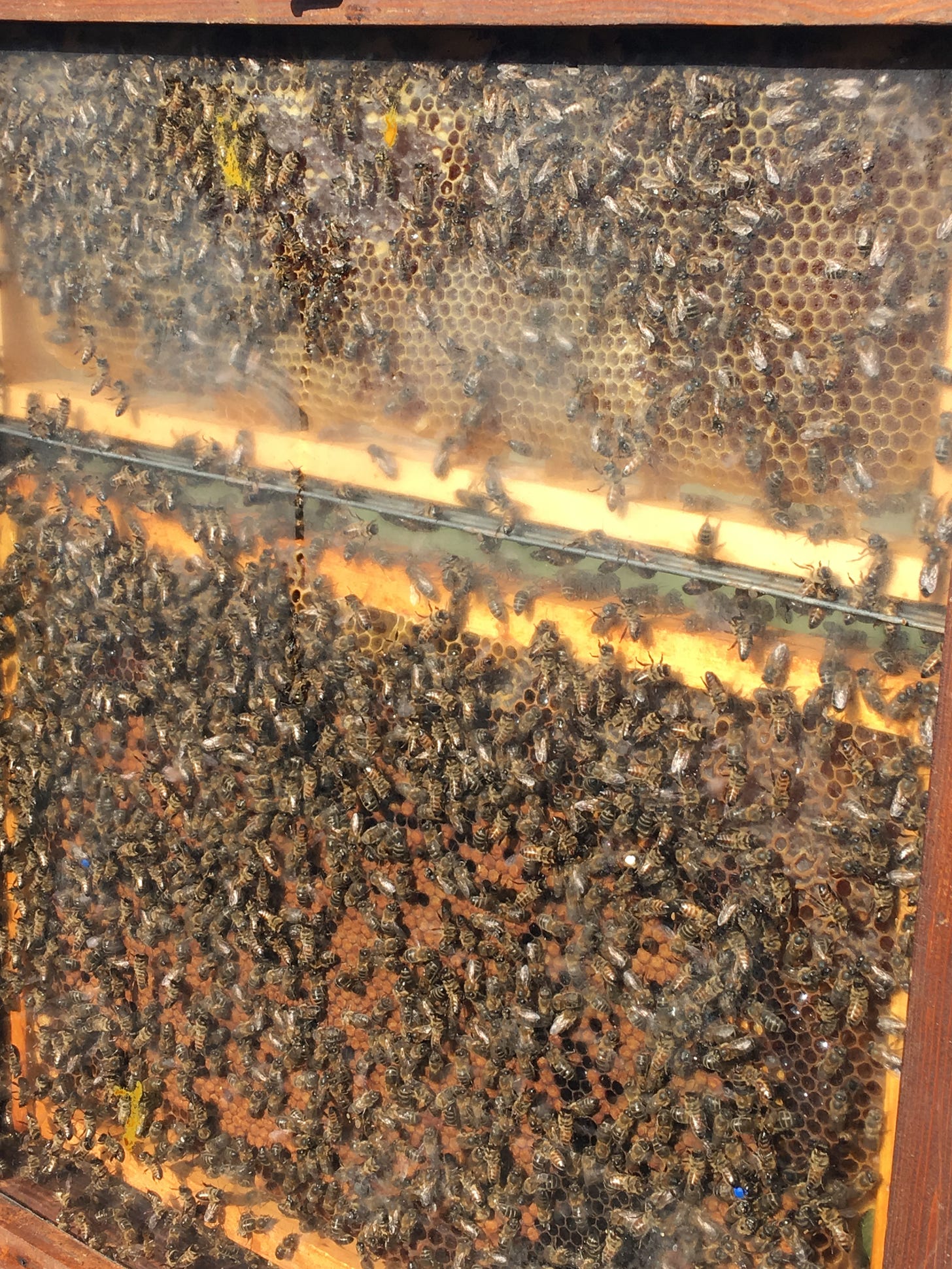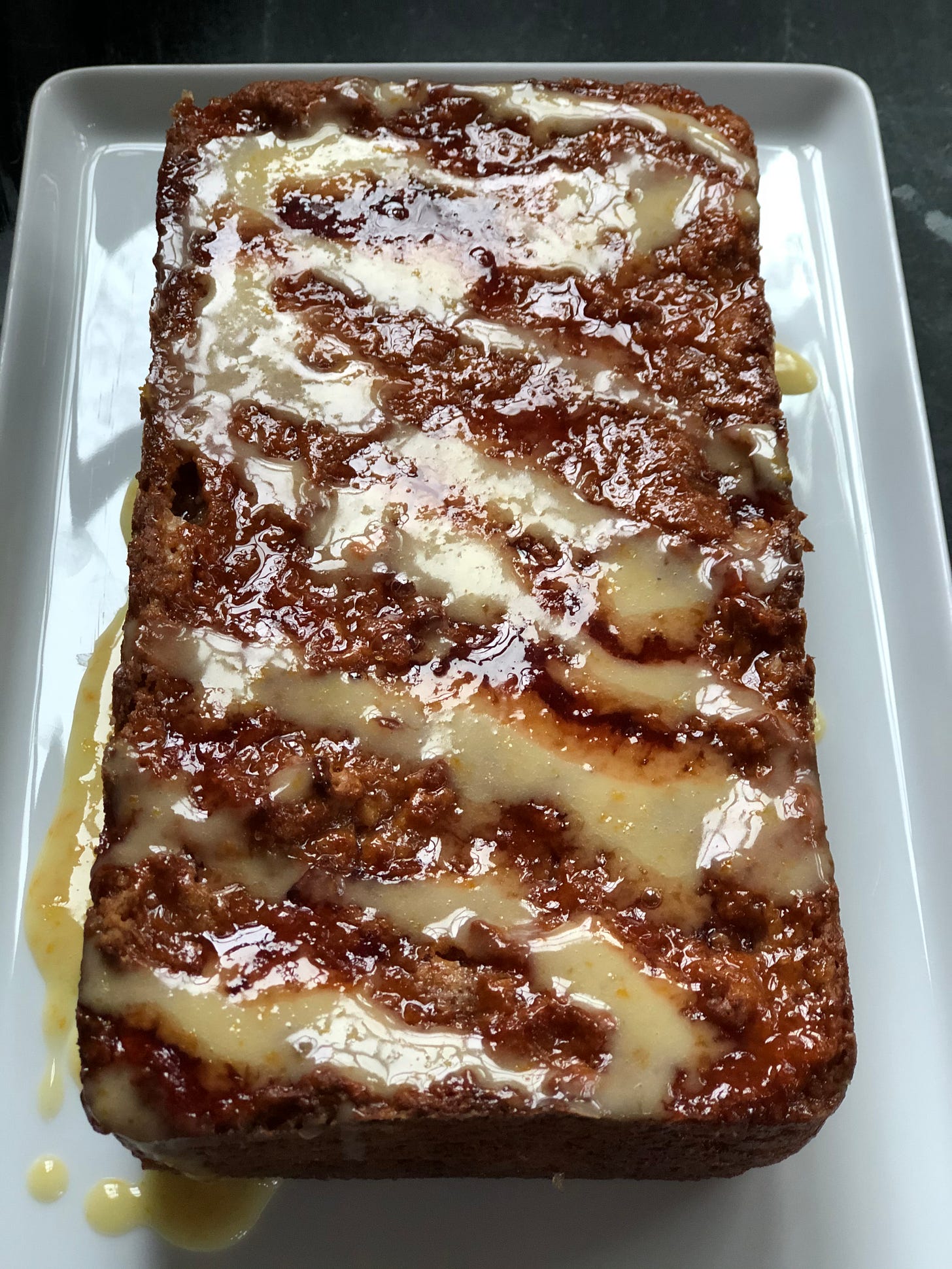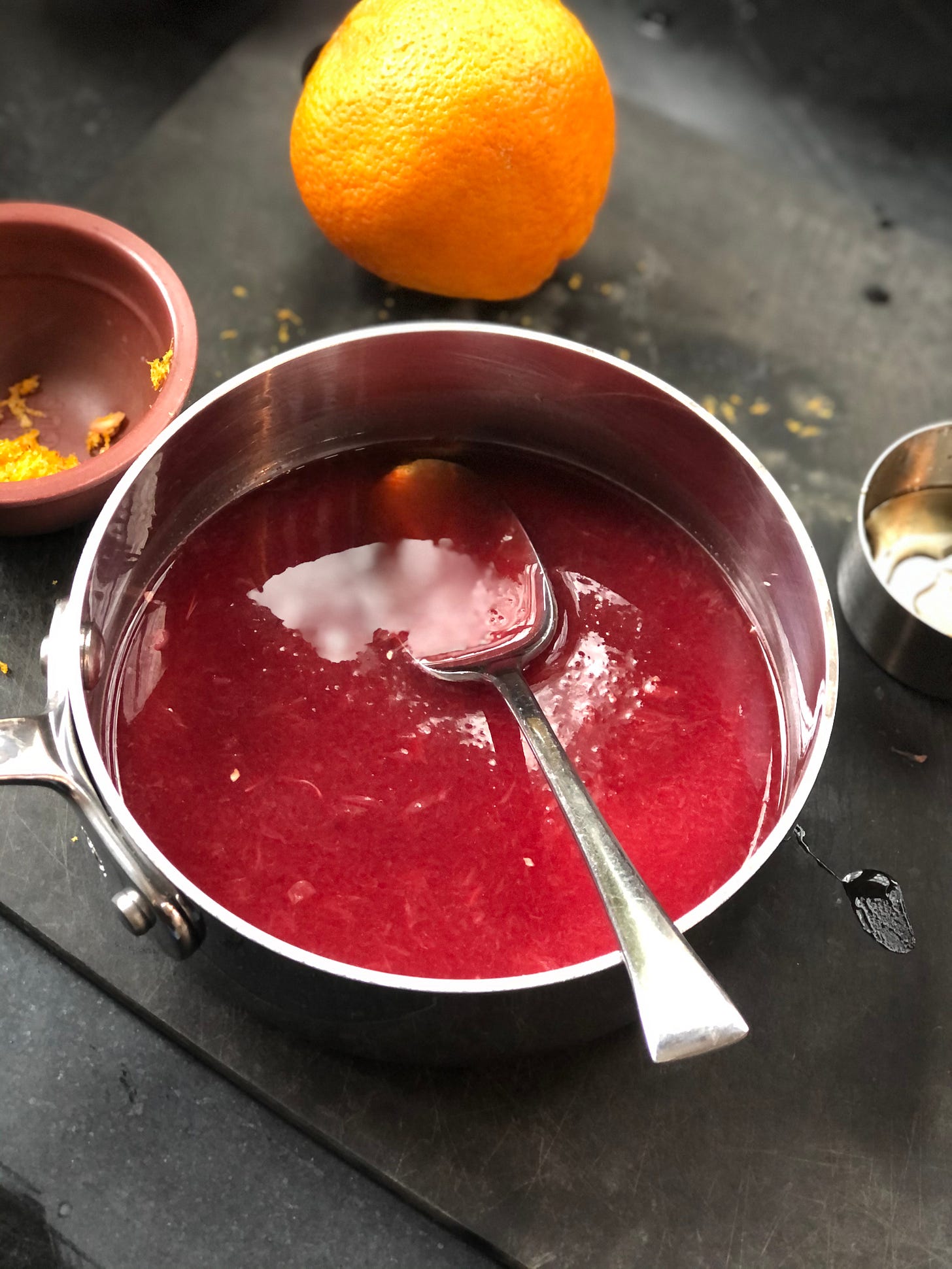I came to this week’s newsletter of two minds.
On the one hand, I wanted to talk about the importance of authenticity, and how that has been heightened for me in the past year.
On the other hand, I really wanted to talk about the magic and poetry of beekeepers, and how I think that secretly all of them are philosopher kings. After all, living in the gentle weaving and harmony of order of the bee universe, how can they not be, astute as they are about observing the ebb and flow of tiny life-producing miracles?
So perhaps I’ll try to do a bit of both, with a leaning towards those beekeepers, who are creating one of the world’s most ancient foods, and are the guardians of the bee galaxy.
The Bee’s Knees
Unique among all God's creatures, only the honeybee improves the environment and preys not on any other species." ~ Royden Brown
I met my first beekeepers at our local farmers’ market. Irina and Ionel Alecu produce the most delicious honey, along with beeswax candles, and other healthful goodies like propolis, bee pollen granules, honey skin cream and royal jelly. You can read more about Irina and Ionel here.
Where I really got up close and personal with the bees and their keepers, however, was in Sicily. In a week devoted to honey and citrus, I met Andrea Paternoster of Mieli Thun (visit his site to meet his mesmerizing bees). A true poet beekeeper, he quoted Tonino Guerra, perhaps better known as an influential screenwriter, but an equally accomplishsed poet, who wrote a book of poetry called Honey in 1988 (for one of Tonino’s lovely poems, see the end of this post). As Andrea told us, in a single honey is the story of a landscape. Busy bees visit 6 million flowers to produce a single kilogram of honey, and the symbiotic relationship between pollination and flower production and bees is magical. “Bees teach you the patience to wait,” he told us. “There is nothing fast or mechanical about the process.”

Counting bees instead of sheep
“My business was born almost by chance, almost, because I would never have thought that from a passion and a pleasure of the palate my future could then be born and develop; and yes, because I have always loved honey and the world of bees.
So years ago, I tested myself and instead of buying the honey I was consuming from an old beekeeper in my city, I tried to produce it myself… and now I have a company with about 1500 hives.” ~ Carlo Amodeo
If you really want a taste of honey that nearly disappeared, that will lead you to Carlo Amodeo. A Sicilian fascinated with bees that started with frequent dreams of bees as a child, Carlo is largely responsible for saving the Sicilian black bee from extinction. His highly prized honey is a mirror of the Sicilian landscape, with flavours ranging from orange blossom and mandarin to prickly pear, eucalyptus and almond. Read more about Carlo and his extraordinary honey here.
I loved how Carlo described the soul of food. As he said “Every honey has its own soul; in fact, every single thing we eat has a soul. If we don’t feel this, the food is soulless.”
The Real Deal
Which leads me to authenticity. If there is one thing that has crystallised for me in the past year, it’s that I want the real deal.
I mean this in every sense. I want news that is factual, information that is accurate, directness, transparency and candor. I’m avoiding fast fashion and fast food (not that I was ever a big consumer of either). I’m abandoning books I’m not enjoying, giving up on the notion that, once started, a book should be finished. The same for that Netflix series that everyone is raving about. I don’t want to “wait until season three – that’s when things really get interesting!”. I’d rather move on.
And in case this all sounds pedantic, dry and rather Puritanical, I’m not giving up on guilty pleasures, frivolous entertainment, silly things that make me laugh. We now have all 23 MCU movies under our belt (that’s the Marvel Comics Universe to the uninitiated). It’s about truly appreciating every single thing that brings me joy, even as life speeds up to warp drive.
Most of all I’m focused on really good ingredients, especially as I cook more, look for new things to try outside my usual repertoire, support hyper-local suppliers and producers, and really try to eat in season.
“Fake” News
None of this is really new but rather something that has come into sharper focus lately. I was thinking about this when I bought some wildflower honey from Bee’s Universe last week. Thick, beautiful and the best possible shade of gold, it is the real deal. Because, shockingly, there’s honey on your grocery shelf that may not be. Reports of fake honey aren’t new. Most commonly, “fake” honey has been cut with other sweeteners to increase production. Or honey is put through ultrafiltration, which changes it at a molecular level. Sweet yes – honey, no longer.
While honey, by some reports, is one of the world’s most “faked” foods, there’s some pretty simple steps you can take to make sure what you’re buying is the good stuff. This article from Greenopedia breaks down what is really happening with honey, and how to buy real honey (hint: local, raw and organic are all good clues!)
Even more troubling, of course, is the reports of the collapse of bee colonies. Known as Colony Collapse Disorder, we’ve all probably read or heard about the alarming decline of bee populations. Bees are responsible for pollinating almost a quarter of all flowering plants and around 400 agricultural crop plants. In another great post from Greenopedia, here are a few simple steps we can all take to help protect bees (PS I’d love to hear from any beekeepers to get the even more information!).
So, before we get to this week’s recipe – pan d’arancio, a really superb Sicilian tea cake that makes the most of the island’s citrus, and yes, a taste of honey – let me leave you with a poem from Tonino Guerra.
Canto Nine
It must have been raining a hundred days,
and the water that saturated
the roots of all the plants
Reached the library and soaked all the holy words
which were closed up in the convent.
When the good weather came,
Sajat-Novà, who was the youngest monk,
got a ladder and took all the books up to the roof,
out in the sun. Then he waited for the warm air
to dry the wet paper.
There was a month of good weather
and the monk kneeled down in the courtyard
waiting for the books to give some sign of life.
And finally one morning the pages started
to rustle slightly in the breeze.
It sounded like a swarm of bees had arrived on the roof
and he started to cry because the books were talking.
Pan di Arancio
makes one 9x5 loaf
from Michael Sampson, The Sicilian Pantry
I learned how to make this delicious and super easy loaf from Michael Sampson, an Irishman who’s lived in Sicily for many years. Based in Palermo, Michael does in-person classes and cook’s tours. He’s also doing an amazing series of online courses that will bring Sicily to your kitchen no matter where you live. Check out his latest classes here and follow him on Instagram for delicious inspiration!
200 gr all purpose flour
100 gr almond flour
1 packet Italian lievito (available on Amazon or your local Italian grocer, or sub in 1½ tsp baking powder and 1 tsp vanilla)
1 tsp kosher salt
150 gr sugar
150 gr unsalted butter
3 eggs
2 medium oranges (preferably organic)
For the bagna:
The juice of two oranges
75 gr sugar (or about half the amount of honey)
For the icing:
1 c. icing sugar
Fresh orange juice (about ½ c)
(For an easy online conversion table, click here)
Preheat the oven to 300F. Grease and flour a 9x5 loaf pan.
Sift together the two flours, salt and powdered lievito or baking powder. Set aside.
Cream the butter and sugar together on medium speed until well blended and fluffy.
Add the eggs one at a time, incorporating fully each time.
Scrub the oranges well, trim the top and tail, and cut into chicks, discarding any seeds. Puree until smooth in a blender or food processor. Add to the batter on low speed until incorporated. The batter will appear grainy.
Fold the flour mixture into the batter until just incorporated, with no streaks of flour.
Pour into prepared pan and smooth the batter. Bake for 45 minutes or until the internal temperature is 210F.
While the loaf is baking, prepare the bagna:
Boil the juice and sugar or honey together until reduced by half. Set aside.
For the icing:
Mix the icing sugar and juice together until you get the desired consistency. You want an icing that is more runny than thick – this is a finishing drizzle. Adjust the amounts of icing sugar and juice as needed.
When the loaf is done, remove from the oven and place on a cooling rack that is set on a tray. Pour the bagna on the loaf and allow to absorb fully. Once the loaf has cooled sightly, drizzle with the icing and serve more on the side for the sweet tooths in the family.









YOU are the Real Deal LizPiz
As always, you have given us a golden blend of philosophy, poetry, and good sense. Brava.